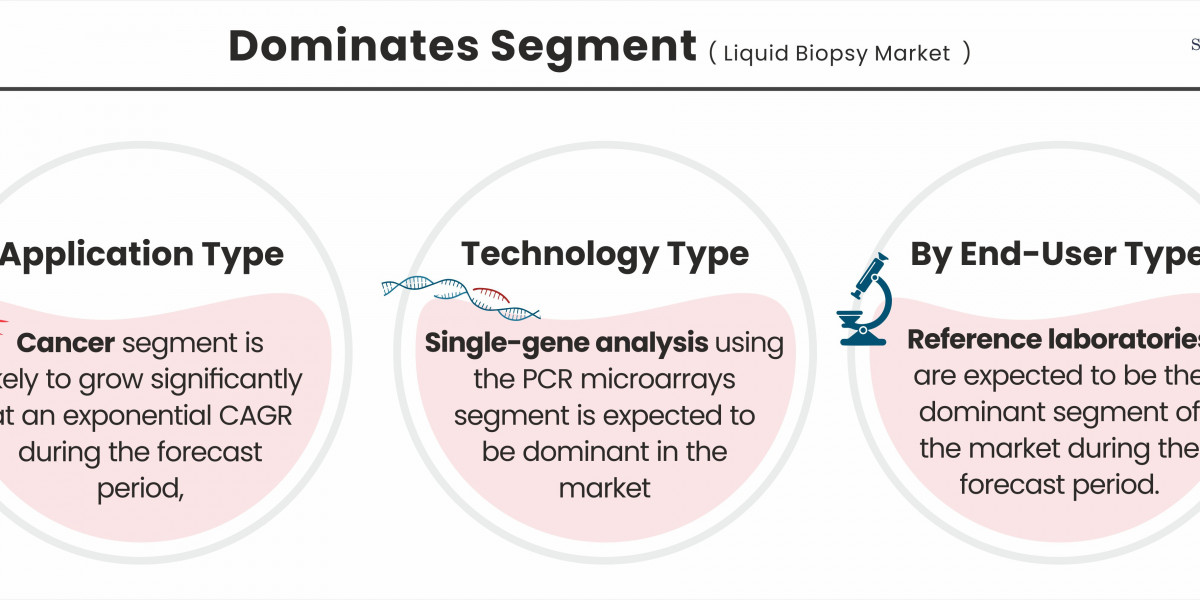According to Stratview Research, the liquid biopsy market was estimated at USD 2.83 billion in 2022 and is likely to grow at a CAGR of 17.99% during 2023-2028 to reach USD 7.64 billion in 2028.
In the realm of modern medicine, the liquid biopsy market is making waves as a revolutionary approach to cancer diagnosis and monitoring. Unlike traditional tissue biopsies that require invasive procedures, liquid biopsies offer a minimally invasive alternative by analyzing biomarkers circulating in bodily fluids such as blood, urine, and cerebrospinal fluid. In this article, we delve into the groundbreaking advancements, applications, and future prospects of the liquid biopsy market.
A Paradigm Shift in Cancer Diagnosis:
Traditional tissue biopsies have long been the gold standard for diagnosing cancer and determining treatment strategies. However, these procedures can be invasive, costly, and sometimes inaccessible due to tumor location or patient health conditions. Liquid biopsies, on the other hand, provide a non-invasive and easily accessible method for detecting and monitoring cancer through the analysis of circulating tumor DNA (ctDNA), circulating tumor cells (CTCs), and other biomarkers present in the bloodstream.
Applications Across the Cancer Care Continuum:
The versatility of liquid biopsies extends beyond initial cancer diagnosis to encompass various stages of the disease continuum. Liquid biopsies are valuable tools for early cancer detection, allowing healthcare providers to identify cancerous mutations at an earlier stage when treatment options may be more effective. Moreover, liquid biopsies play a crucial role in monitoring treatment response, detecting minimal residual disease, and assessing the emergence of treatment resistance, enabling timely adjustments to therapy and personalized treatment approaches.
Advancements Driving Market Growth:
The liquid biopsy market is propelled by continuous advancements in technology, including next-generation sequencing (NGS), polymerase chain reaction (PCR), and digital droplet PCR (ddPCR), which enable the sensitive and accurate detection of tumor-derived biomarkers in complex biological samples. Additionally, ongoing research efforts are focused on expanding the range of analytes detectable by liquid biopsies, including proteins, exosomes, and microRNAs, further enhancing their utility in cancer diagnosis and management.
Challenges and Opportunities:
Despite its potential, the liquid biopsy market faces challenges such as standardization of testing protocols, validation of biomarkers, and reimbursement issues. Standardizing sample collection, processing, and analysis procedures is essential to ensure the reliability and reproducibility of liquid biopsy results across different laboratories and healthcare settings. Furthermore, addressing reimbursement barriers and ensuring cost-effectiveness will be crucial for widespread adoption and integration of liquid biopsies into routine clinical practice.
However, amidst these challenges lie significant opportunities for market growth and innovation. The expanding applications of liquid biopsies beyond oncology, including infectious diseases, prenatal screening, and transplant monitoring, present new avenues for market expansion and diversification. Additionally, collaborations between industry stakeholders, regulatory agencies, and healthcare providers are essential for advancing research, standardization efforts, and regulatory approvals in the field of liquid biopsy diagnostics.
The Future of Liquid Biopsy:
As technology continues to evolve and our understanding of cancer biology deepens, the future of the liquid biopsy market holds tremendous promise. With ongoing research focused on biomarker discovery, technological advancements, and clinical validation studies, liquid biopsies are poised to revolutionize cancer care by providing real-time insights into disease progression, treatment response, and therapeutic resistance. By breaking new ground in the field of molecular diagnostics, liquid biopsies are paving the way for more precise, personalized, and effective approaches to cancer diagnosis and treatment.
In conclusion, the liquid biopsy market represents a paradigm shift in cancer diagnostics, offering a non-invasive, accessible, and informative approach to detecting and monitoring cancer. By exploring the advancements, applications, and challenges of liquid biopsy technology, we can better appreciate its transformative potential in improving patient outcomes and advancing the field of precision medicine. As we continue to break new ground in the exploration of liquid biopsy diagnostics, the future of cancer care looks brighter than ever before.







